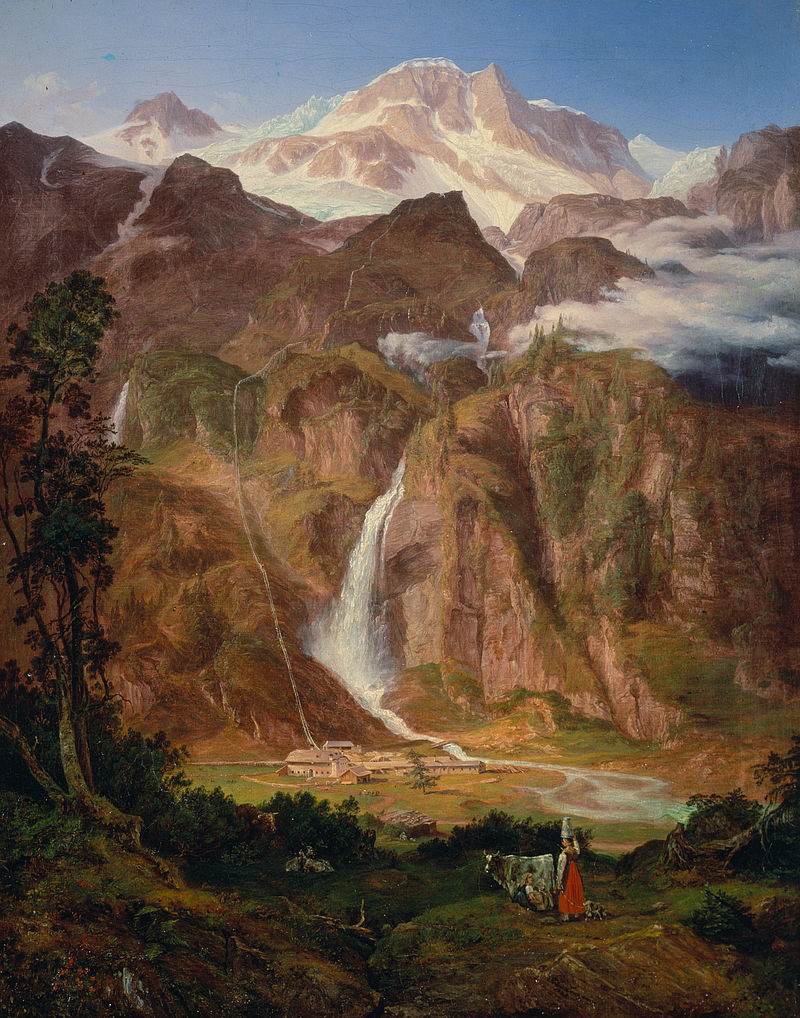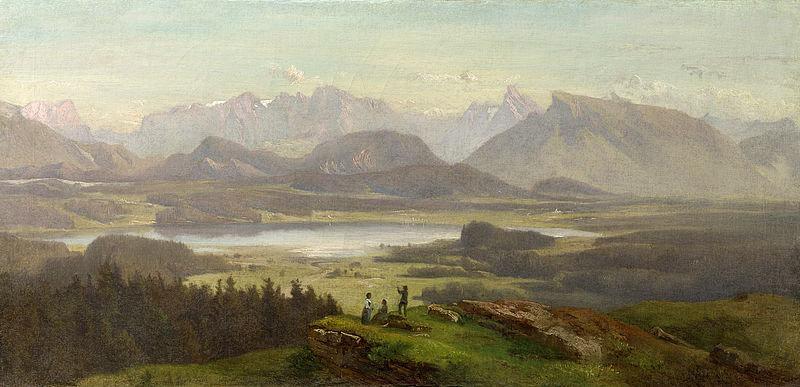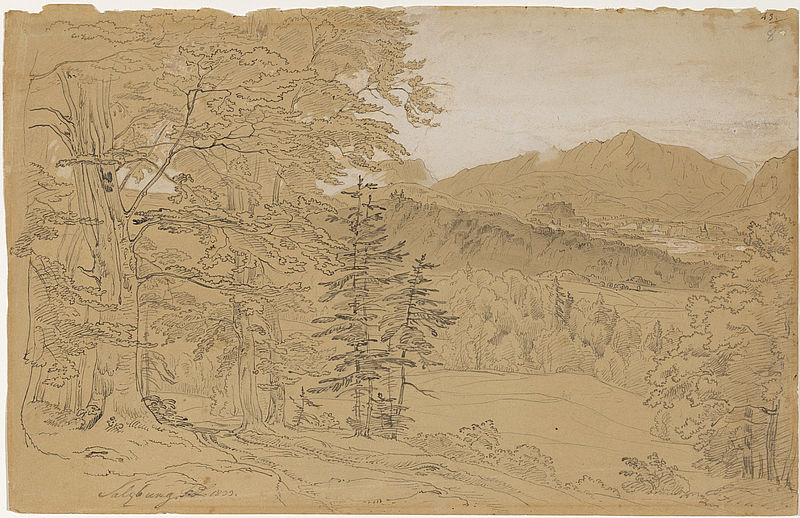Kolm Saigurn in the Rauris Valley with the Sonnblick Mountain
Framesize 89.00 x 73.50 x 9.00 cm
The artist’s first direct encounter with the foothills of the eastern Alps, on a three-week trip led by Mössmer in the Schneeberg region, made a lasting impression on him.
Many years later, he painted his imposing rendering of the towering Sonnblick mountain with a rushing waterfall over Kolm Saigurn. The picture was inspired by Joseph Anton Koch’s Schmadribachfall, dated 1821/22 (Neue Pinakothek, Munich, WAF 449). In a comparable composition, Loos gives a convincing interpretation of the Salzburg mountain region and its natural forces. The way in which Loos zooms in on every detail of the terrain, using rich, luminous colours and clear-cut contrasts of light and shade, shows him as a pioneer of realist landscape painting – although the traditional baroque foreground with romanticising staffage figures rounds off the wide-ranging, heroically enhanced composition.
This “mountain portrait” celebrates the utilisation of natural forces. The eye of the viewer is guided towards the hydrological cycle and the bold structure of the funicular railway, a sensational feat of engineering built in 1832/33 to serve the silver and gold mines. Driven by a water wheel close to the glacier, it was used for transporting the mined ore. The buildings at the end of the Rauris valley included the washing plant.
This painting is probably identical to the one Loos presented in the same year at the Vienna Academy exhibition, entitled “Salzburg Alpine Region: the pounding mill and washing plant of the gold mine on the Hoher Sonnblick in Rauris.”
OEHRING Erika: Loos Friedrich, Kolm Saigurn in the Rauris Valley with the Sonnblick, in: DUCKE Astrid, HABERSATTER Thomas, OEHRING Erika: Masterworks. Residenzgalerie Salzburg. Salzburg 2015, p. 150






